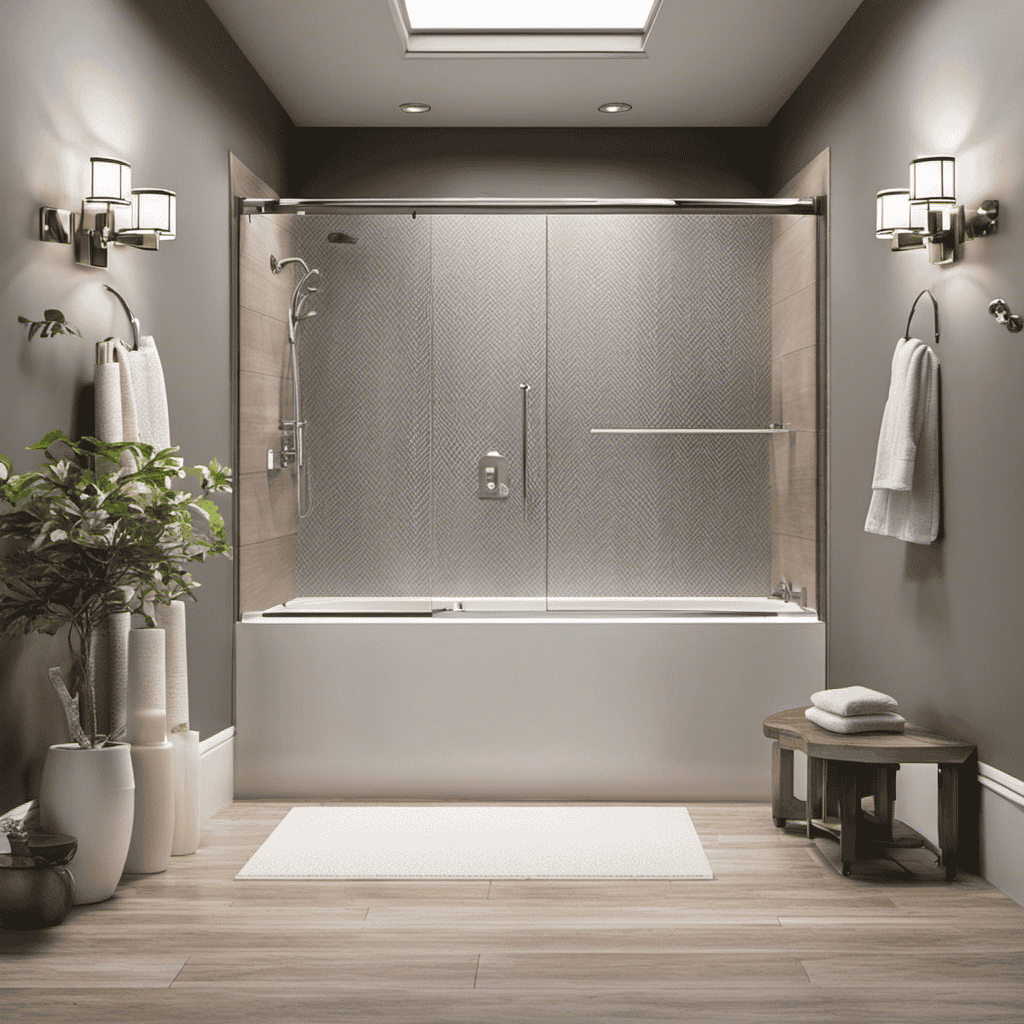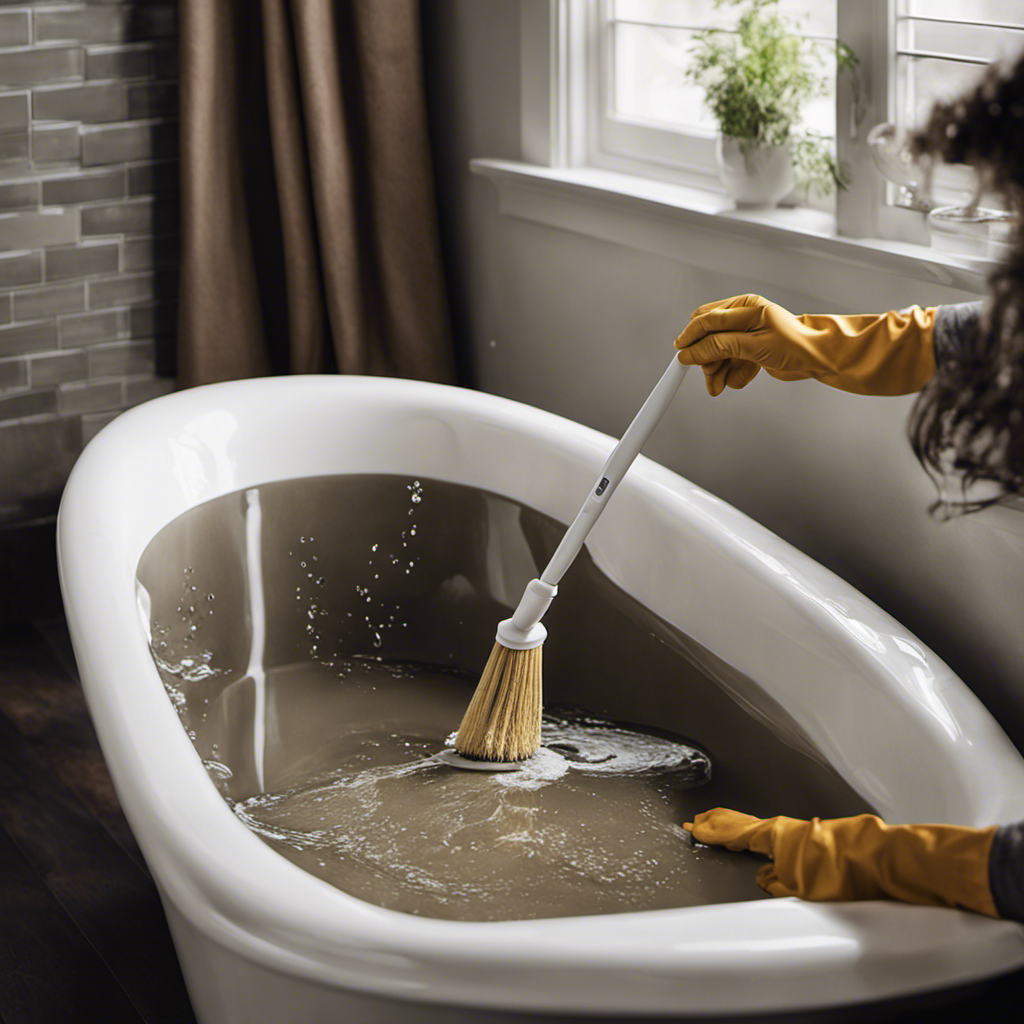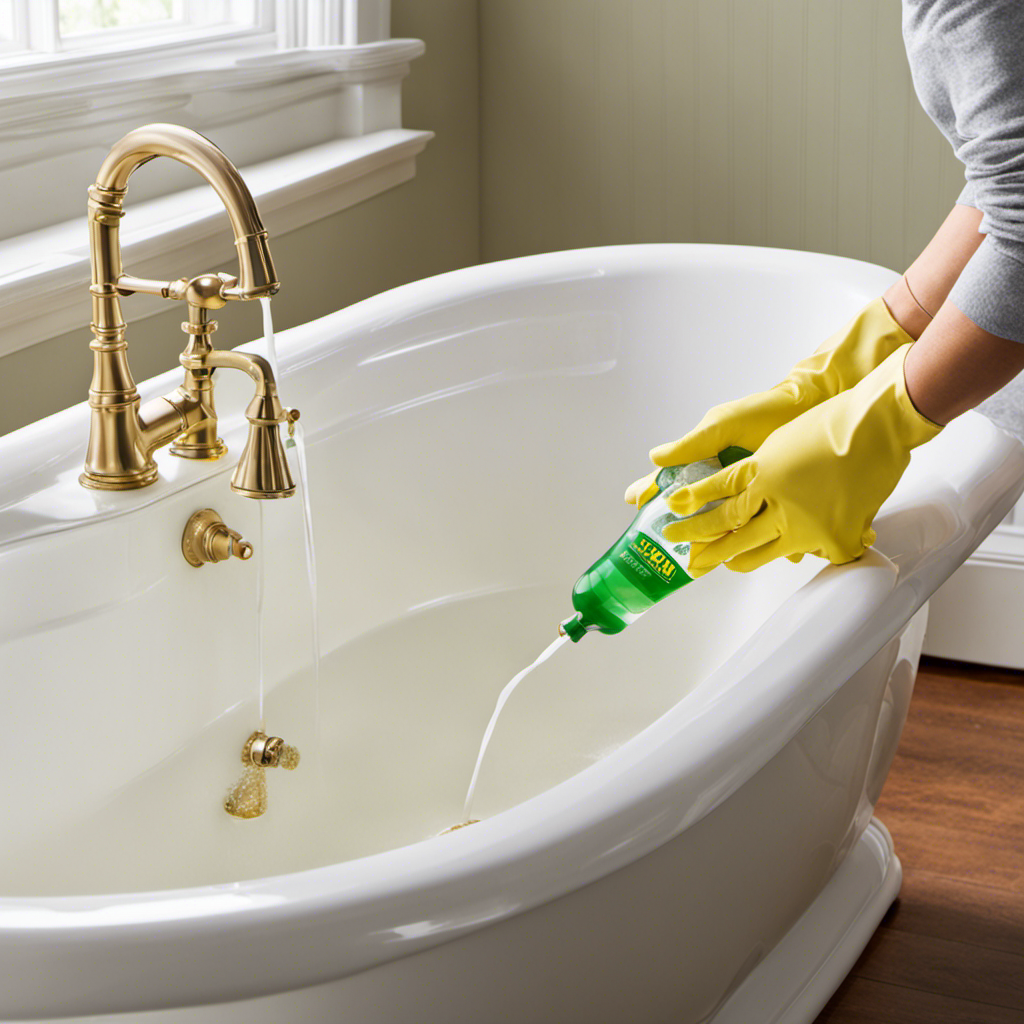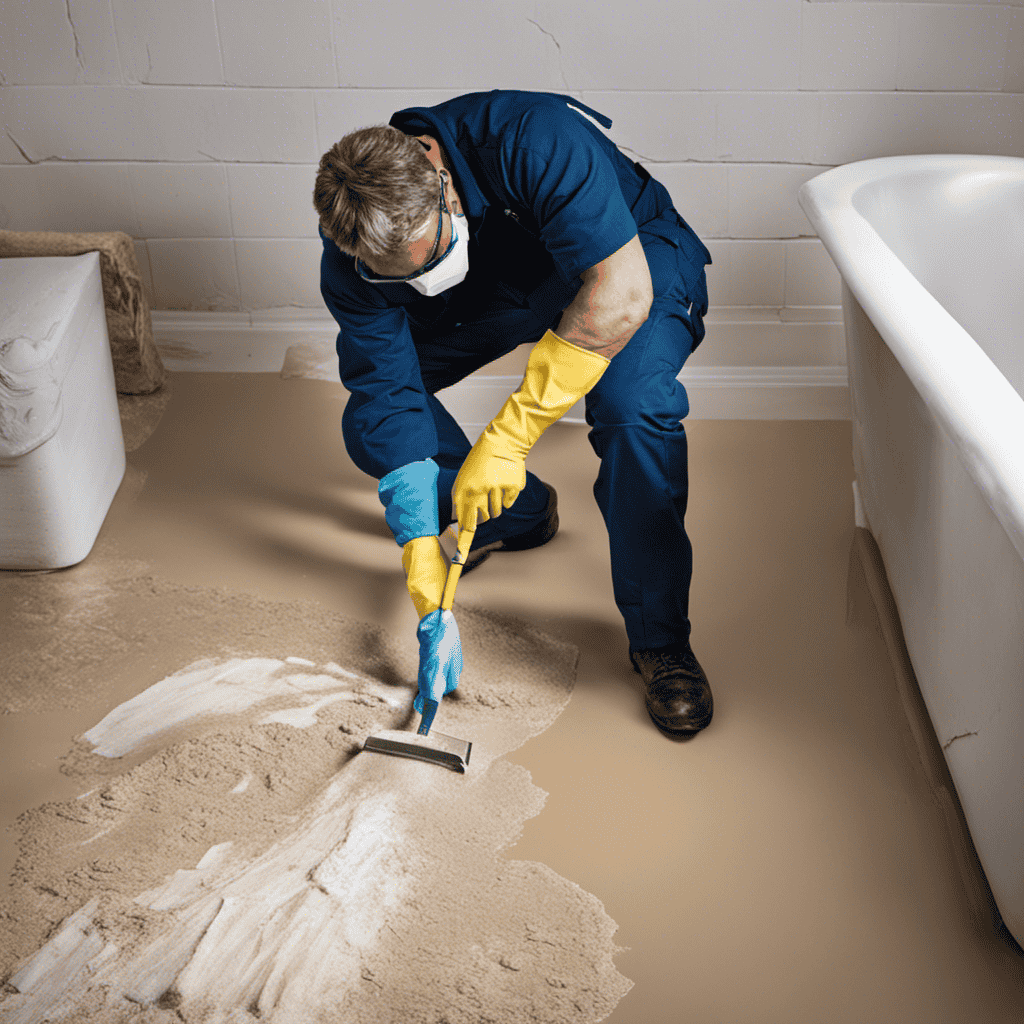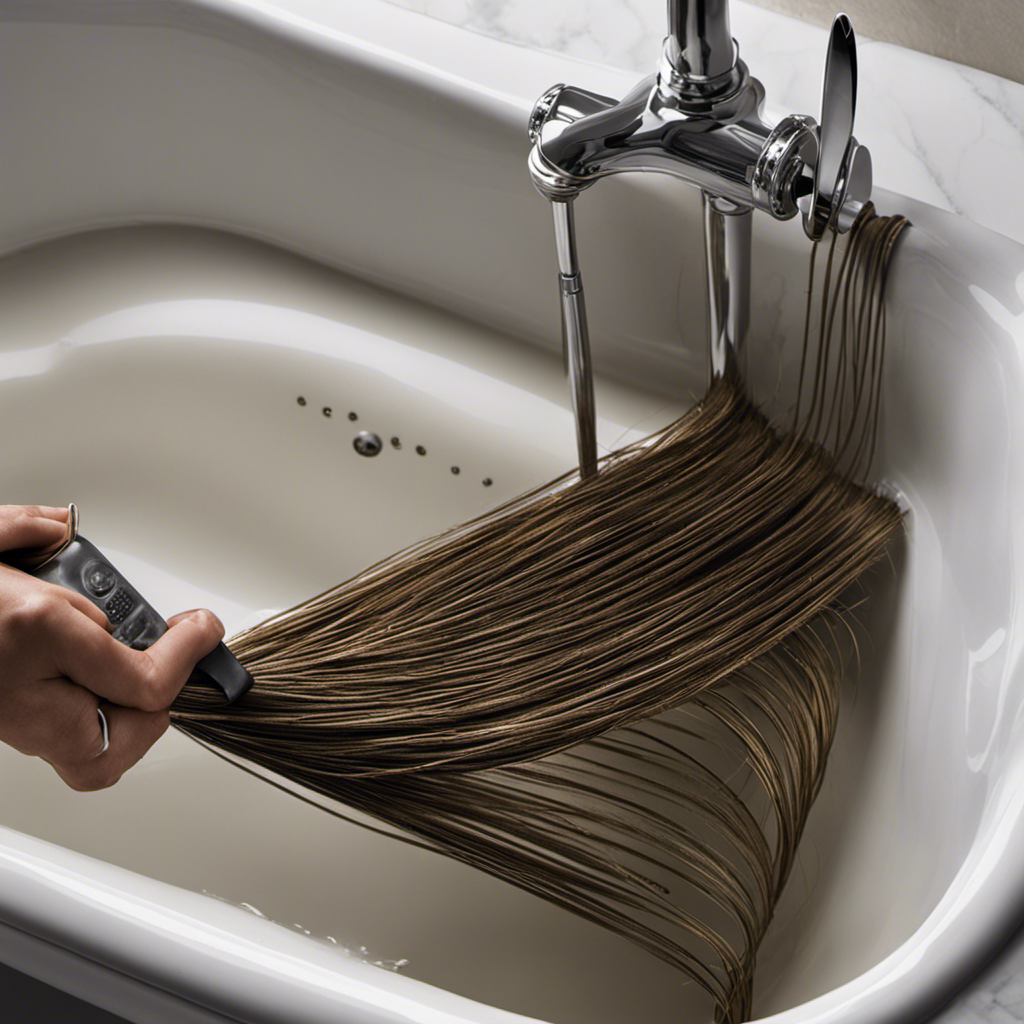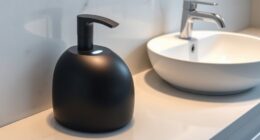I’ve been there before – standing in a flooded bathroom, desperately trying to figure out how to unplug a bathtub. It’s a frustrating and messy situation, but fear not, because I’ve got you covered.
In this article, I’m going to share with you the step-by-step process of unclogging your bathtub. From assessing the blockage to employing mechanical methods, I’ll walk you through each technique to ensure a successful outcome.
So let’s dive in and get that drain flowing freely again!
Key Takeaways
- Assess the blockage by feeling around the drain for hair or debris, observing water flow, and checking for visible obstructions
- Gather the necessary tools such as a plunger, drain snake, rubber gloves, bucket, and bathtub stopper
- Use natural drain cleaners like baking soda, vinegar, and hot water to safely and effectively remove clogs
- If DIY methods fail, seek professional help from a plumber for persistent or major drain issues
Assessing the Blockage
Now, you’ll need to feel around the drain to see if there is any hair or debris causing the blockage. To analyze the water flow, start by running the tap and observing how the water drains. If the water drains slowly or doesn’t drain at all, it is a clear indication of a blockage.
Identifying potential causes requires a keen eye and a systematic approach. Check for any visible hair or debris around the drain opening. Use your fingers to gently remove any obstructions you come across.
If the blockage persists, it may be located further down the drain pipe. In this case, a plunger or drain snake may be necessary to dislodge the clog. Remember to always exercise caution when dealing with plumbing issues to avoid causing further damage.
Gathering the Necessary Tools
First, you’ll need to grab the necessary tools to get the job done. Here are the essential items you’ll need to unplug your bathtub and prevent future blockages:
- A plunger: This tool creates suction to dislodge clogs and is effective for minor blockages.
- A drain snake: Also known as a plumbing auger, this flexible tool helps to break up and remove stubborn debris.
- Rubber gloves: Protect your hands from potentially dirty and unsanitary conditions.
- A bucket: Use this to collect water and debris as you work, preventing any mess from spreading.
- A bathtub stopper: Choose the right stopper to fit your drain securely, effectively preventing future blockages.
By having these tools ready, you’ll be well-prepared to tackle any bathtub blockage.
Remember to use the stopper regularly to prevent debris from entering the drain and causing future issues.
Using Natural Drain Cleaners
Using natural drain cleaners is a safe and effective way to remove clogs and keep your pipes flowing smoothly. When it comes to eco-friendly alternatives, homemade drain cleaners can be a great option. These cleaners are made from simple ingredients that you probably already have in your kitchen, such as baking soda, vinegar, and hot water.
The combination of these ingredients creates a chemical reaction that helps break down and dissolve the clogs in your pipes. To use this homemade drain cleaner, start by pouring a cup of baking soda down the drain, followed by a cup of vinegar. Let the mixture sit for a few minutes, and then flush it down with hot water.
This method is not only environmentally friendly but also cost-effective and easy to make.
Employing Mechanical Methods
One effective way to clear clogs in your pipes is by employing mechanical methods such as using a plumbing snake. This tool, consisting of a long, flexible metal cable with a corkscrew-like tip, is inserted into the drain to break up and remove blockages. Here are five key things to keep in mind when using a plumbing snake:
- Insert the snake slowly and steadily into the drain, guiding it along the pipe.
- Rotate the snake clockwise to allow the corkscrew tip to grab onto the clog.
- Apply gentle pressure while turning the handle to break up the blockage.
- Slowly pull the snake out, allowing it to collect any debris on its way.
- Dispose of the debris properly to prevent further clogs.
Using chemical solutions can be effective, but if the clog persists or you are unsure, it may be necessary to hire a plumber for professional assistance.
Seeking Professional Help
If you are unsure about how to handle a persistent clog or if you have tried multiple methods without success, it’s time to seek professional help from a plumber. While DIY approaches can be effective for minor drain issues, there are common bathtub drain problems that require the expertise of a professional. A plumber has the knowledge and tools to tackle complex clogs and ensure a thorough fix. Here is a table highlighting some common bathtub drain problems:
| Problem | Possible Cause | Solution |
|---|---|---|
| Slow draining | Hair buildup | Snaking the drain |
| Overflowing drain | Clog in main sewer line | Hydro-jetting |
| Foul odor | Blocked vent pipe | Vent pipe inspection and fix |
Conclusion
Well, congratulations! You’ve just become an expert in the art of unplugging bathtubs. Now, armed with your newfound knowledge, you can confidently tackle any future blockages that may arise.
Remember, it’s always a good idea to keep those necessary tools handy and have some natural drain cleaners on standby. And if all else fails, don’t hesitate to seek professional help.
Because, let’s face it, who doesn’t love a good challenge?
Happy unclogging!

